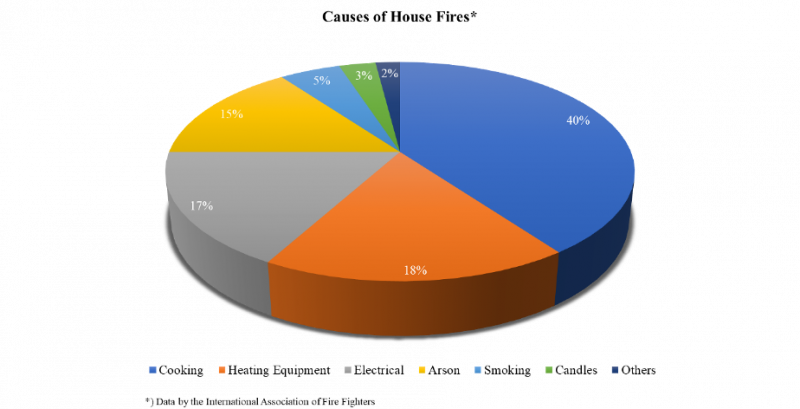Fire Prevention Vol. 1: House Fire

In accordance with the fire triangle theory, fires can occur if and only if all three of its constituent components, fuel, oxygen, and heat, are present at the scene. Thus, fire prevention can be done by eliminating one or more of these three components. Types of fuel dan sources of oxygen and heat are different among buildings. It happens due to differences in building occupancies, resulting in differences in the commodities, the availability of items that can generate heat, and the oxygen supply. In this article, we will discuss preventive measures for a house fire.
House fire and its causes
In a residential house, we can find electronic equipment that functions by generating heat, such as irons, ovens, stoves, etc. In addition, equipment or devices such as laptops and plugs can also generate heat when used excessively or exceed their capacity. In addition to potential heat sources, we also need to focus on the existing fuel for fires in a residential houses. In a residential house, most furniture is made of combustible materials such as wood and plastic. For the availability of oxygen itself, residential houses usually rely on ventilation, both natural and mechanical.
Based on data from the National Fire Protection Association (NFPA), an average of 358,300 residential fires occur each year. For the cause, data from the International Association of Fire Fighters (IAFF) states that fires in residential houses are caused by cooking activities (40%), equipment that generates heat (18%), electrical short circuits (17%), intentional burning (15%), smoking (5%), candles (3%), and other causes (2%).

House fire prevention
Based on the explanation in the previous section, several actions can be taken as fire prevention measures. These actions will focus more on heat sources and materials that have the potential to become fuels because of the need for oxygen which is impossible to eliminate. These efforts include:
- Use electronic equipment appropriately
- Unplug when not in use
- Do not leave heat-generating equipment on
- Do not place heat-generating equipment near flammable furniture
- Do not leave the stove on
- Regularly check the condition of the cables in the house
- Avoid burning trash near the house
- For smokers, make sure the cigarette is dead before throwing it away
Writer: Fitri Endrasari - Fire Engineer Ignis Fire & Risk
0 Comments